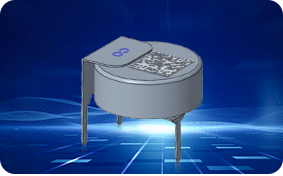The explosion of industries such as AI, robotics, and clean energy is profoundly changing the development process of human society. At this critical period of significant historical change, sensors, as the foundation of deep applications, urgently need to expand new directions and accumulate more development momentum for the new round of industrial upgrading. Recently, as a grand event of the Greater Bay Area sensor industry chain, the Shenzhen International Sensor and Application Technology Exhibition was held at the Futian Convention and Exhibition Center.
As the first sensor exhibition of 2024, this year, Puseng Sensing unveiled its latest gas sensor products and solutions, showcasing the latest achievements of Puseng Sensing's R&D team in exploring forward-looking markets for the future. While participating in the exhibition, the audience also actively interacted with technical experts, delving into the latest developments in technology and gaining a lot from it.
Formaldehyde sensor shines brightly
Formaldehyde is a highly irritating gas with characteristics of volatility and high toxicity, and is listed as a Group 1 carcinogen by the International Agency for Research on Cancer (IARC). Formaldehyde sensors are the key core for sensing formaldehyde and are widely integrated into various devices and products, including categories such as smart homes and automobiles. After obtaining formaldehyde concentration through sensors, various equipment and system expansion functions can be derived by combining existing technologies. However, the mainstream formaldehyde sensors currently have a significant drawback, which is poor anti-interference ability. In response to this drawback, the WZ-H3 selective formaldehyde detection series from ProSense has quickly become a star product in the industry and has now become the mainstream choice for customers in the air quality industry.
Carbon monoxide sensors are highly sought after
Carbon monoxide has the characteristic of being colorless and odorless, and can enter the human body through the respiratory tract, causing suffocation. In recent years, carbon monoxide poisoning accidents have occurred frequently, causing multiple casualties, and there is a great demand for carbon monoxide alarm devices in society. The core of the carbon monoxide alarm device is of course the carbon monoxide sensor. Since its launch, the ProSense FC-CO-1000 long-life carbon monoxide sensor has received unanimous praise from customers and is widely used in fire protection, security and other scenarios. This product complies with domestic and international standards such as GB and UL, and has currently established a foothold in the high-end sensor market.
Hydrogen sensors assist in zero carbon transformation
To achieve the strategic goal of "carbon peak and carbon neutrality", countries around the world are actively promoting the proportion of renewable energy use, and the new energy storage industry will play a key role in it. It should be noted that hydrogen sensing technology in the energy storage industry is relatively difficult, which greatly tests the innovation capabilities of sensor companies in terms of products, technology, processes, and manufacturing. As an early explorer of hydrogen sensing technology, ProSense has developed the FC-H2-1000 hydrogen sensor to meet the needs of hydrogen detection and perception in different application scenarios, which has received widespread attention at this exhibition. Industry experts and authoritative figures participating in the exhibition unanimously believe that the breakthrough of ProSense in hydrogen technology is a milestone achievement in the industry.
The exhibition has come to a successful conclusion, and the excitement never stops. ProSense will always adhere to its original intention, provide better gas sensors for the industry, continuously improve product performance and service quality, strive to create ultimate standards and reliable solutions, and work together with users to help the industry develop a new chapter.





